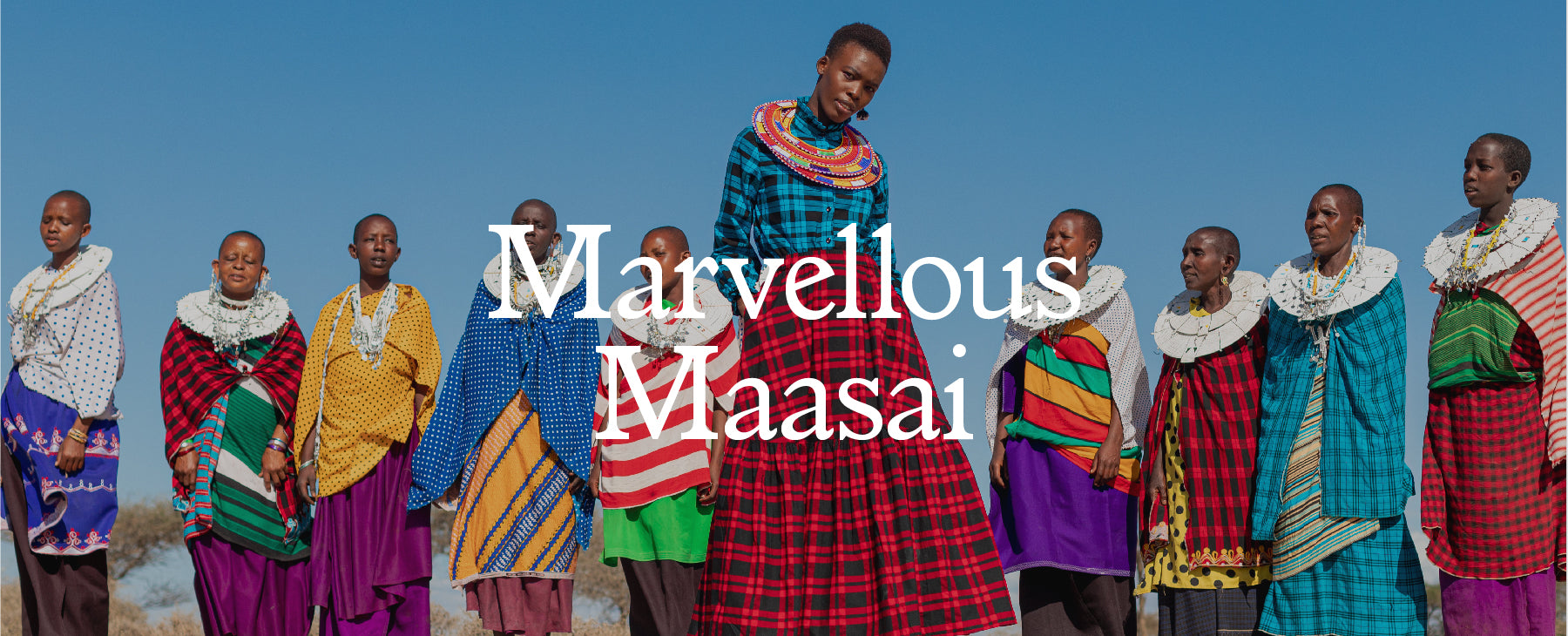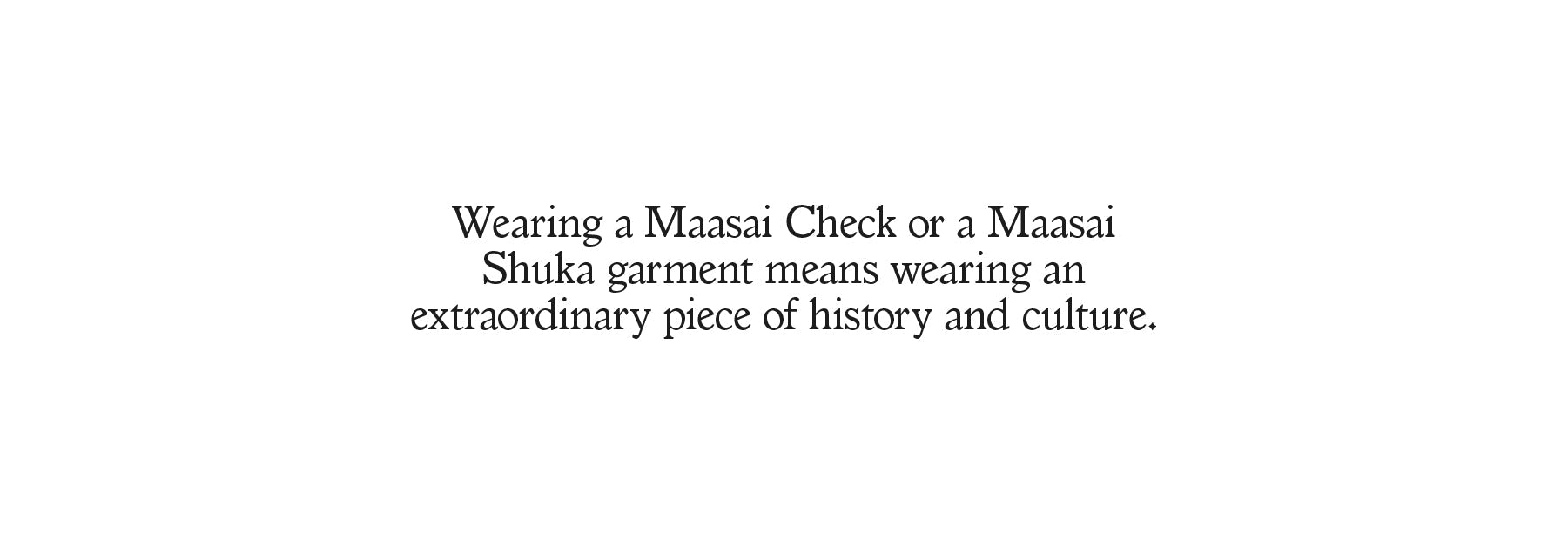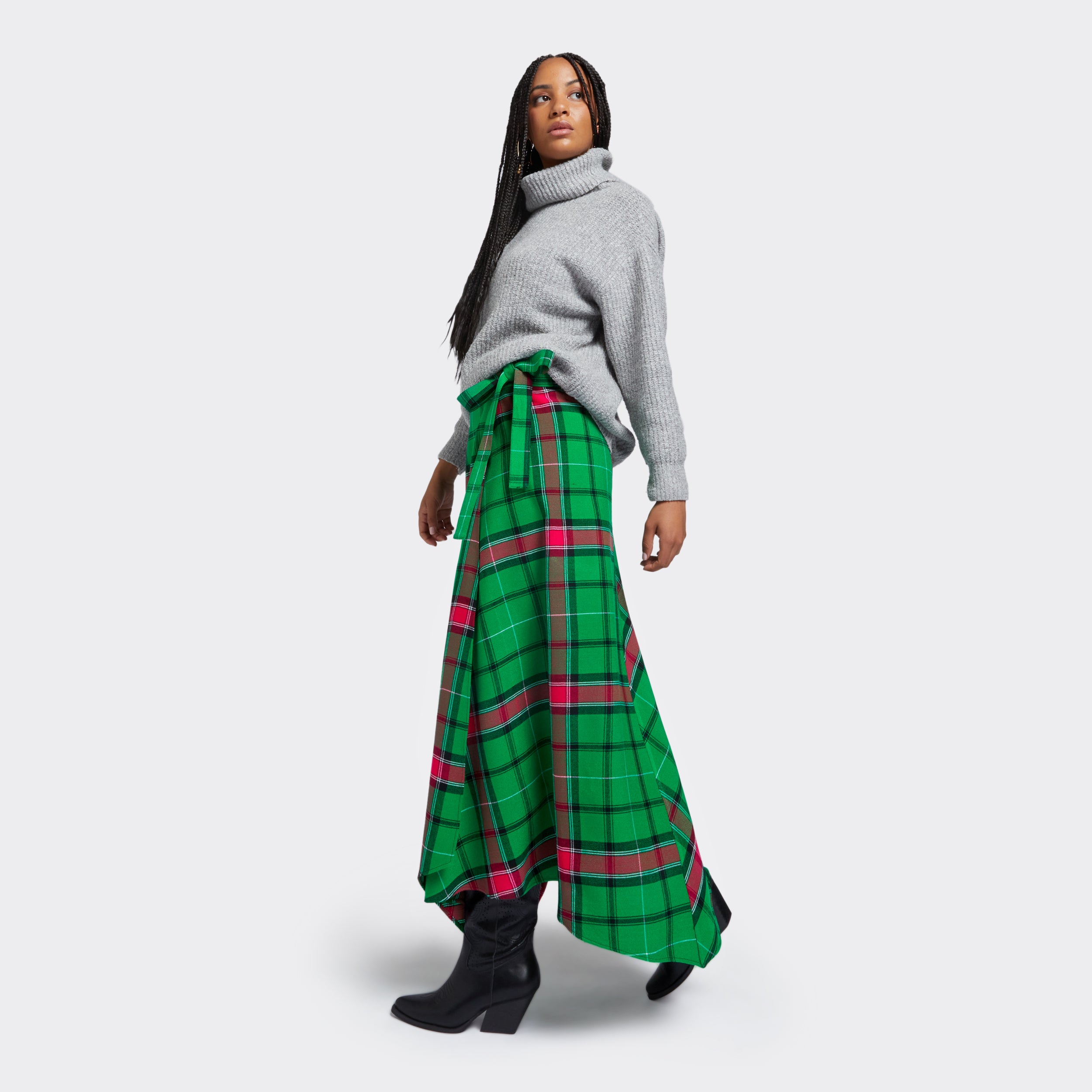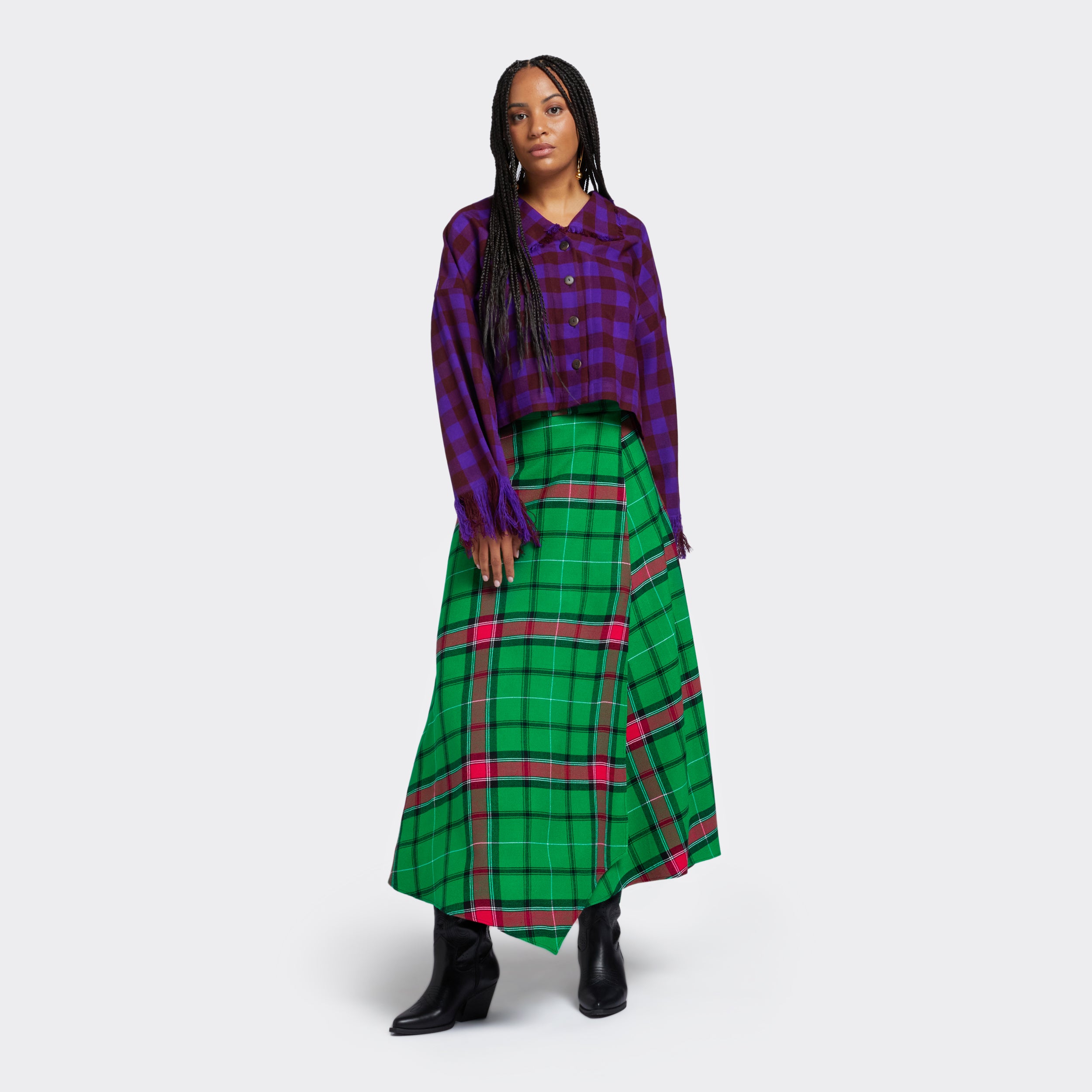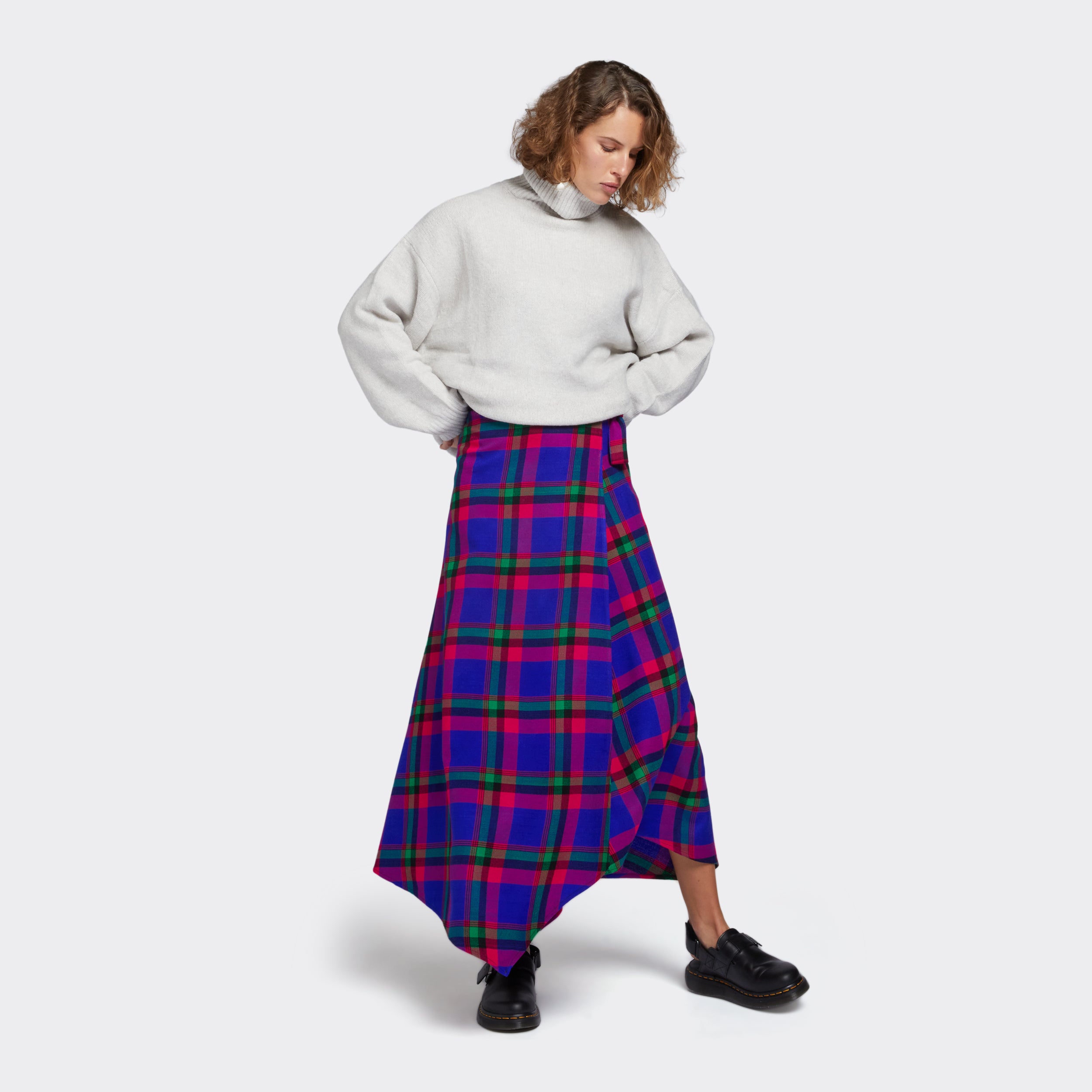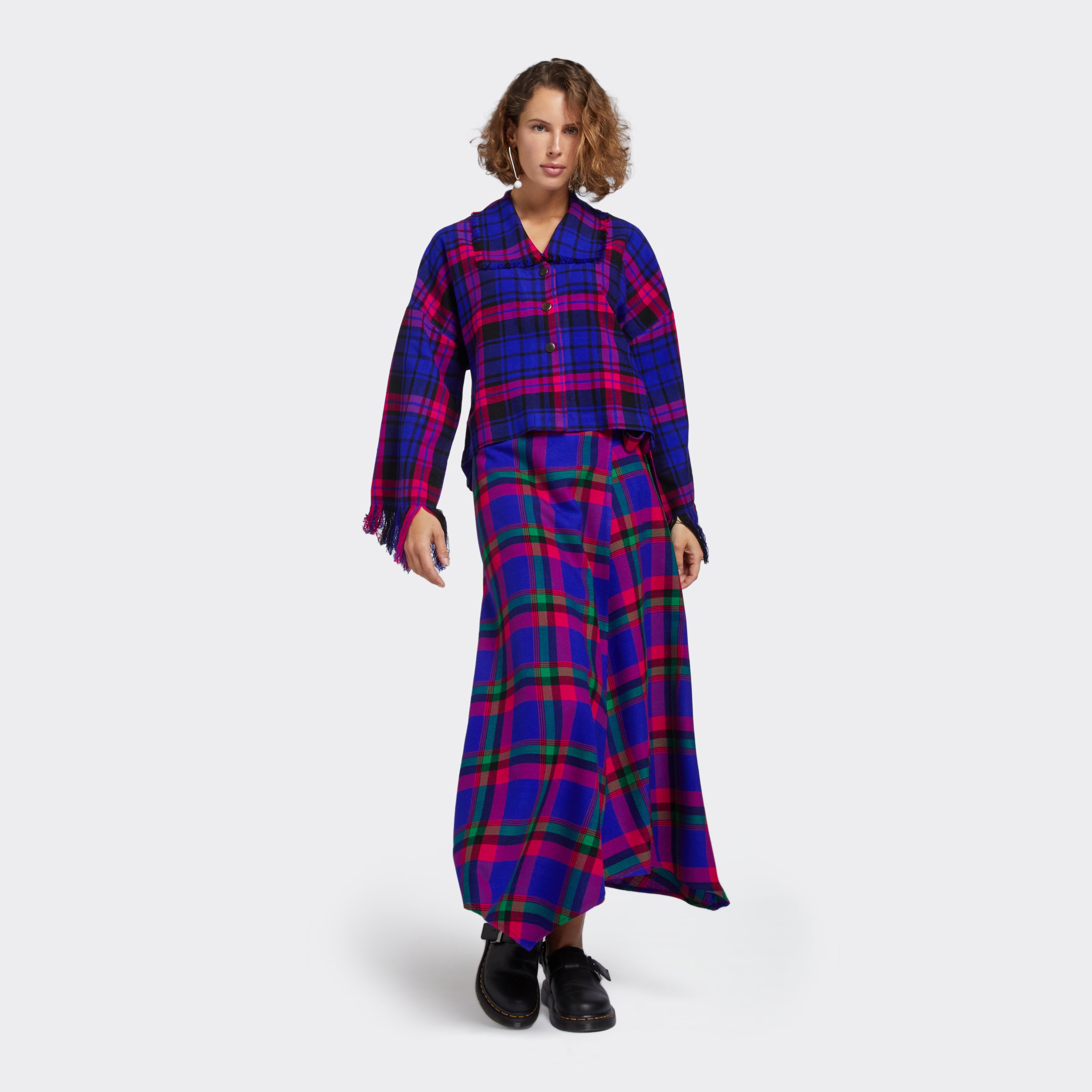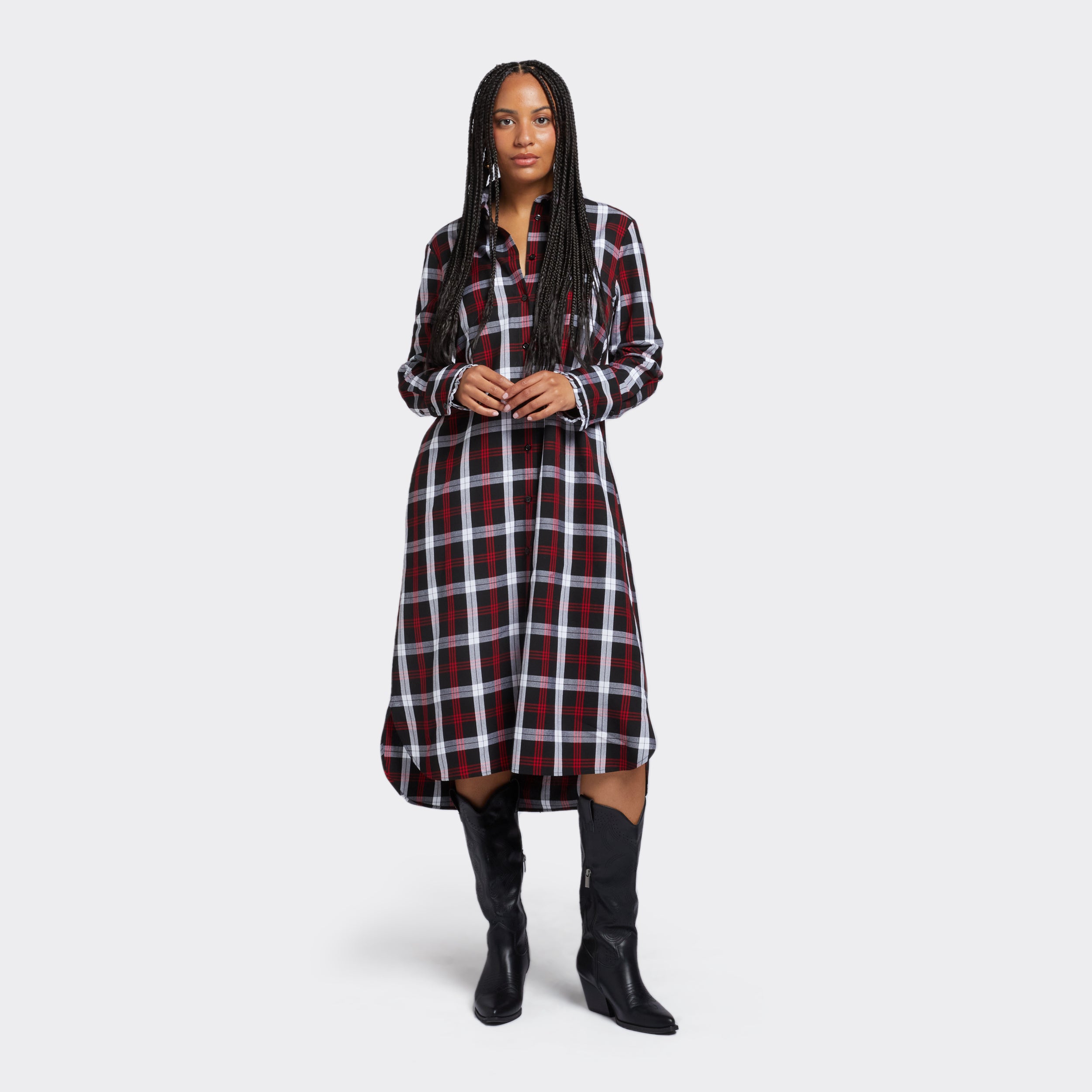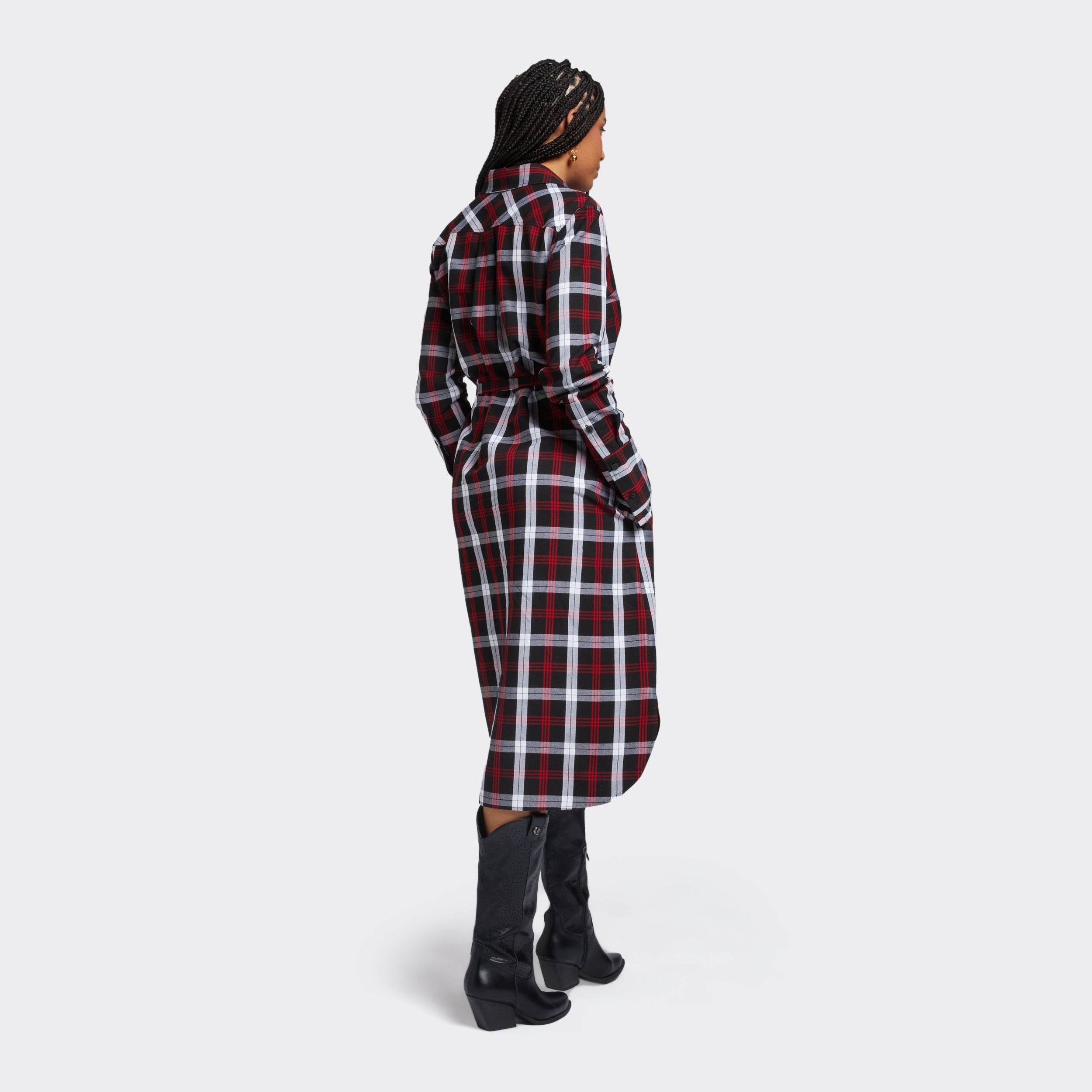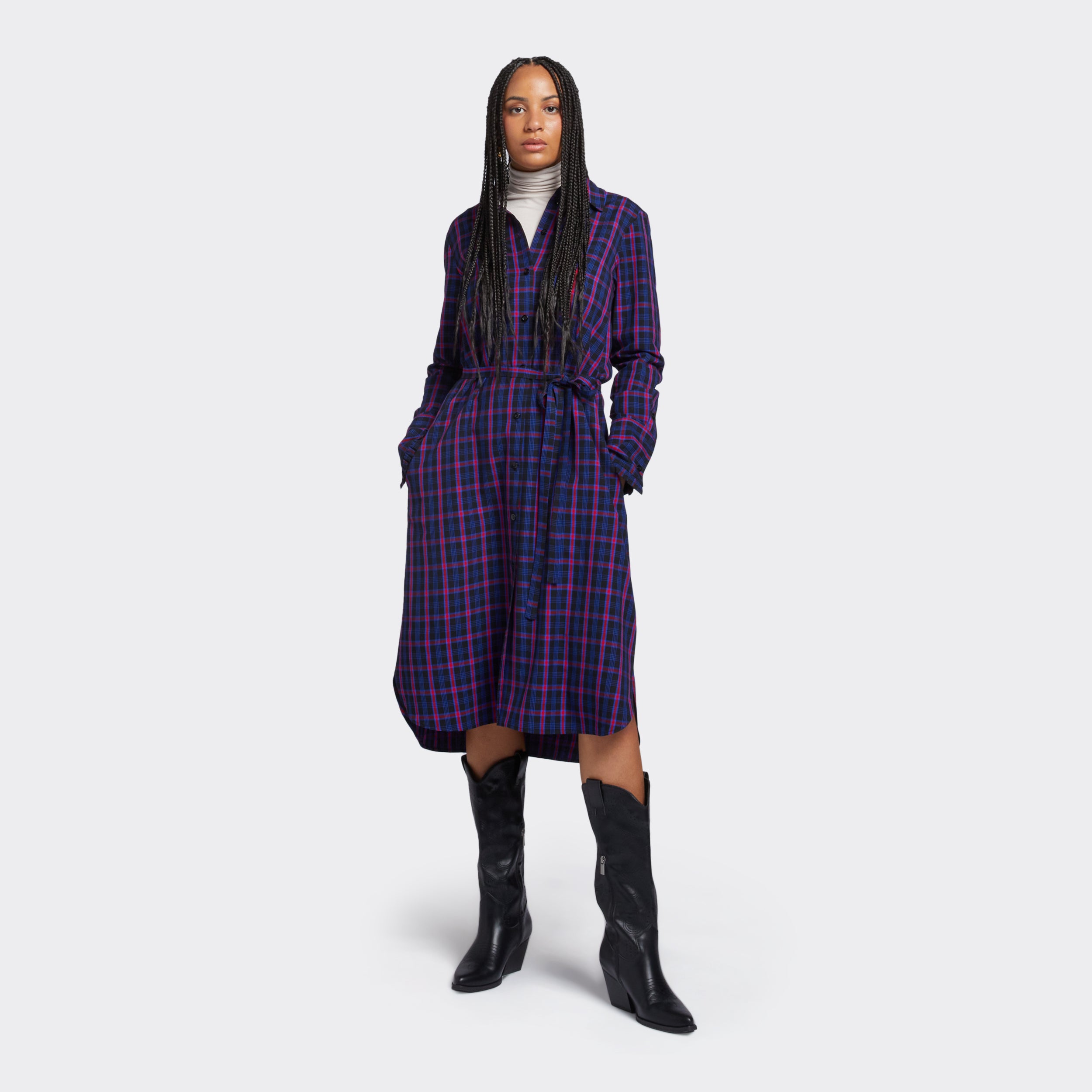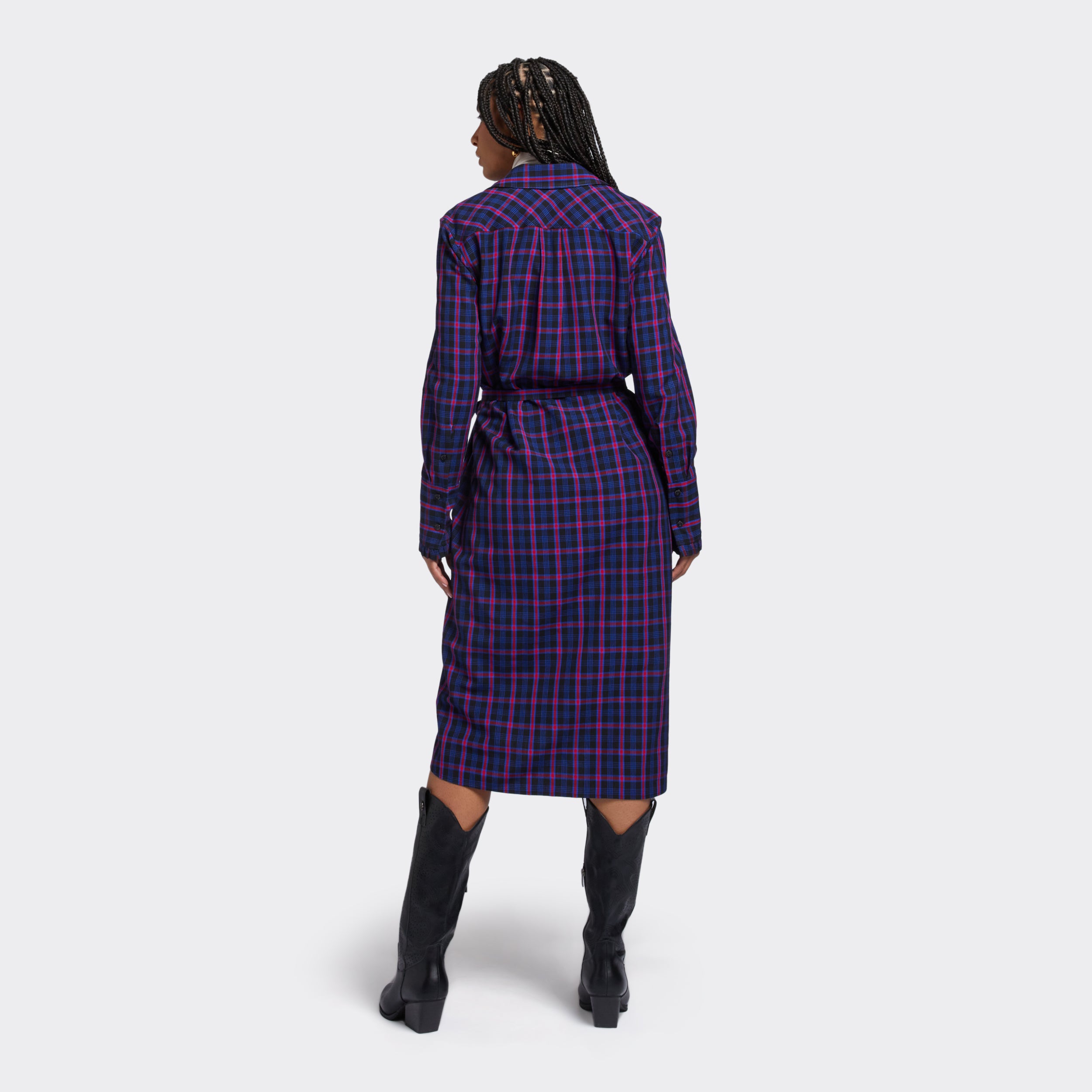MATERIALS
CHECKS, BRIGHT COLORS AND MUCH, MUCH MORE
MAASAI FABRICS HOLD DEEP MEANINGS AND STRONG CONNECTIONS TO THEIR LAND AND COMMUNITY.
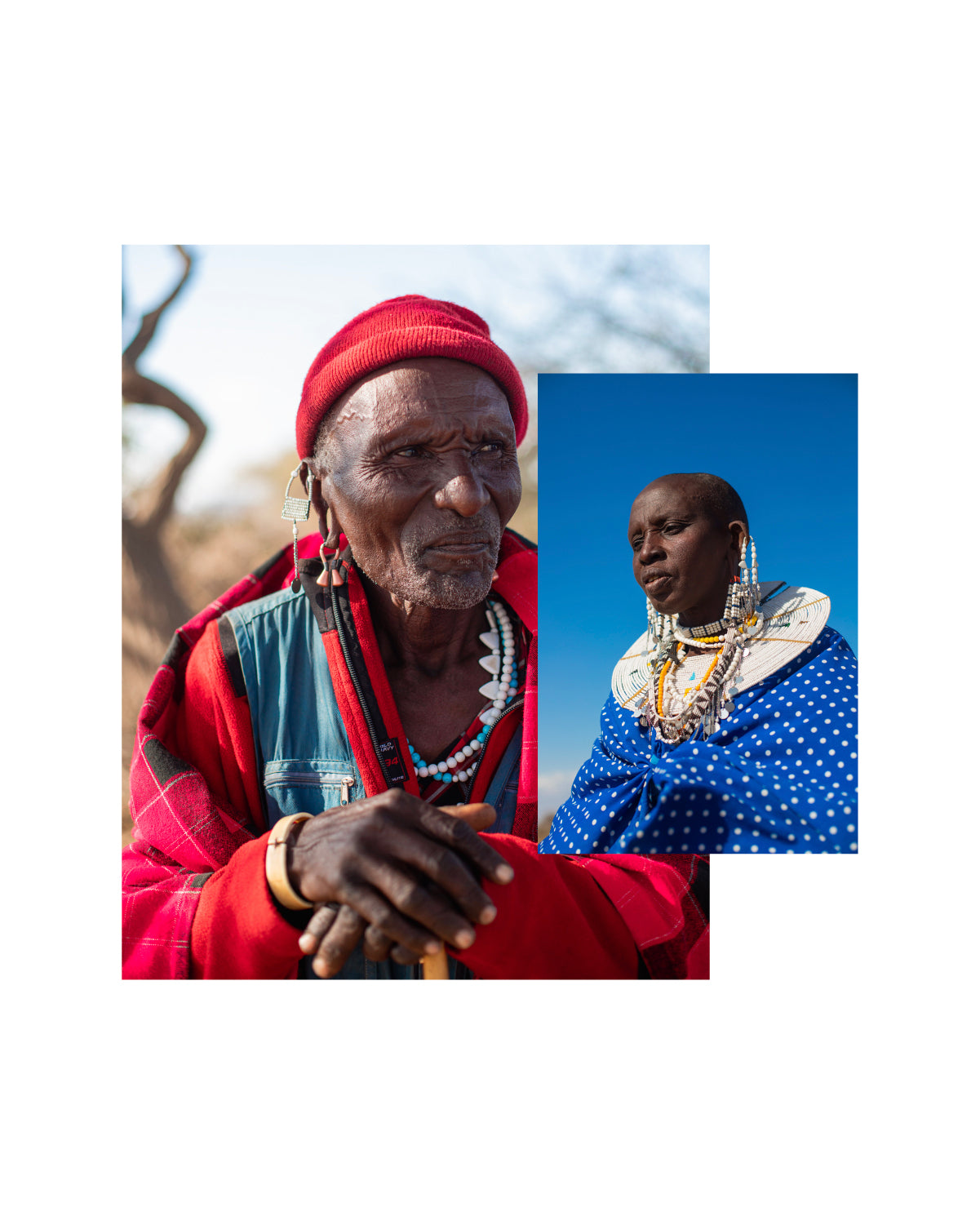
MAASAI SHUKA, THE SYMBOL OF A COMPLEX HISTORY
The fabrics that today we generically call Maasai are not traditional to East Africa: it was the English colonizers who first introduced cotton and synthetic fibers to the shepherd populations - which is why the Maasai pattern is very similar to the Scottish kilt.
Durable and capable of protecting against the harsh climate of the Savannah, Maasai Shuka began to be used for its practicality, and today it is the prevalent fabric among the Maasai, who wear it layered, draped over their bodies or on their shoulders.
COLORS WITH A MEANING
Each of the colors of the Maasai fabrics, which are distinguished in Maasai Check (softer and mainly made of cotton) and Maasai Shuka (made of acrylic fiber), have different meanings.
Blue, for example, is the color of the sky and the rain that nourishes the earth; red and pink represent strength and courage; white is linked to purity and green to life-giving nature, along with yellow, the color of the sun. Colors also identify statuses: blue is the color of married people while the elderly usually wear red.
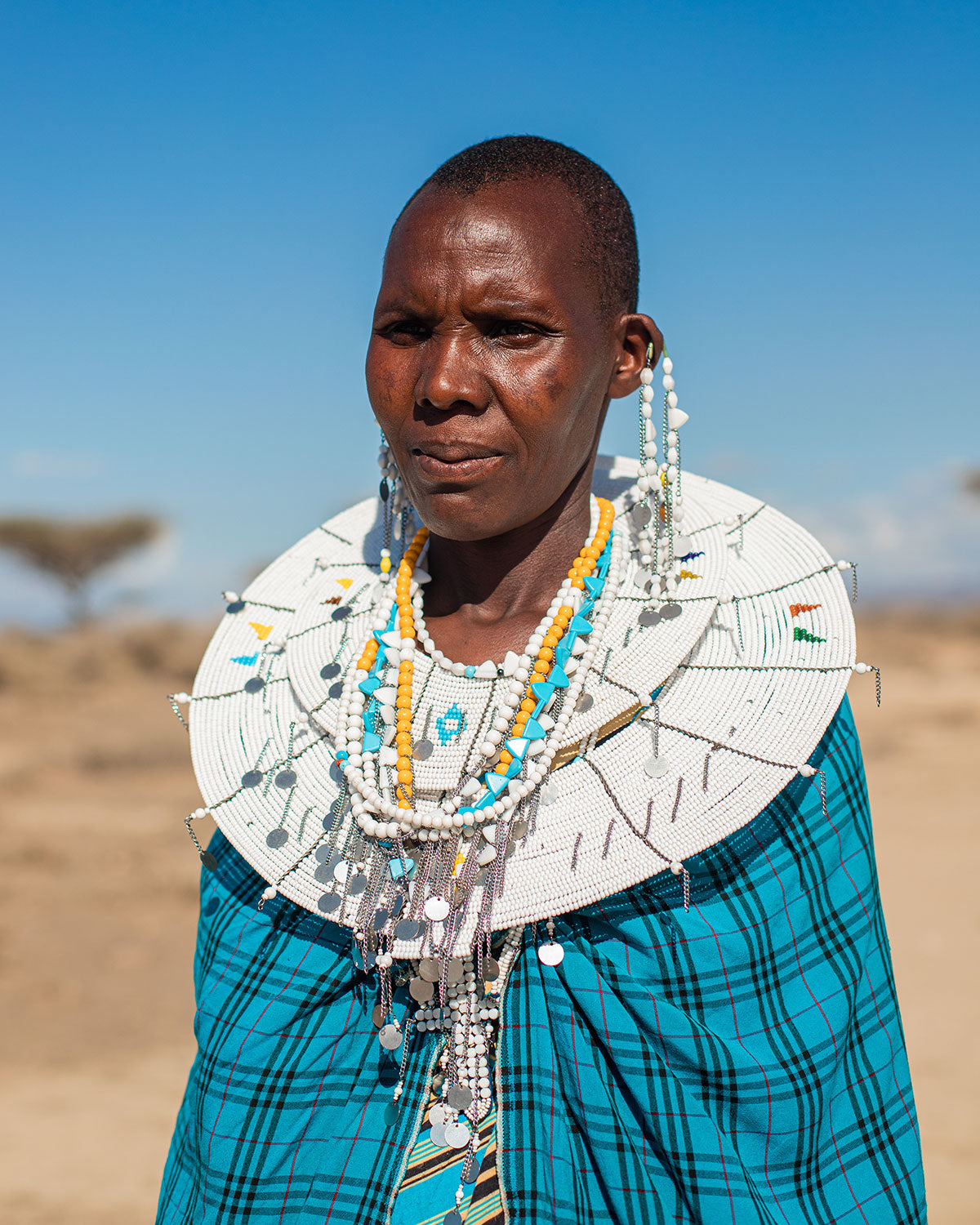
MUCH MORE THAN JUST FABRIC: MAASAI SHUKA AND FASHION
The elegance of the Maasai people and the beauty of Shuka have inspired many Western fashion designers. In the past, several collections have been accused of cultural appropriation and of exploiting the Maasai culture without any acknowledgement or economic consideration.
This is why Endelea collaborates with the MIPI - Maasai Intellectual Property Initiative, an organization that protects Maasai culture all over the world.
Together with MIPI, Endelea is committed to working in a transparent way and respecting the Maasai culture, as well as contributing a percentage of the revenues to the association's activities with the Maasai community.
ENDELEA AND THE MAASAI SHUKA
Maasai fabrics are beautiful, and maybe that was enough to justify their use in a collection. But on our journey to discover the true African textile culture, we decided to go further. We had the privilege of working with the Maasai community of a small "boma" near Arusha, a Tanzanian province on the border with Kenya.
The photos on these pages are an amazing testimony of this dialogue, as well as a precious memory. Wearing a Maasai Check or a Maasai Shuka garment is cool, sure, but most importantly it means wearing an extraordinary history and culture.
Featured collection




